Model Fleets
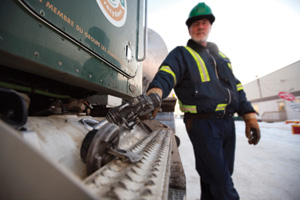
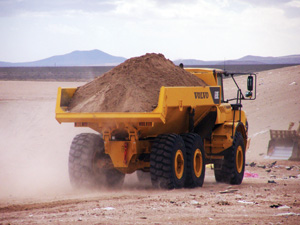
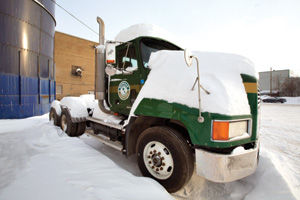
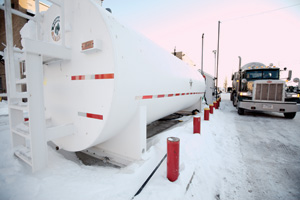
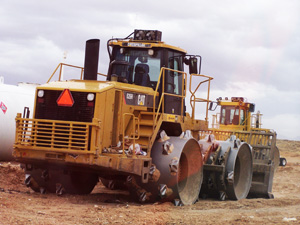

November 17, 2010
BY Luke Geiver
Ask 10 people what sustainability means and you'll likely get 10 different answers. Some of those answers will, however, begin with alternative fuels like biodiesel, and the proof is in the most obvious of places-public and private fleets. From landfill operations in New Mexico to food transport companies in Canada, a growing number of vehicle fleets are acting on the idea of sustainability by putting biodiesel-blended fuel in their tanks. Coincidentally, even with immensely differing rationale for why they decided to use biodiesel, managers of 5- to 500-vehicle fleets say the same things-that their concerns, the changes and the amount of maintenance required to successfully introduce biodiesel into their vehicles, make a very short list indeed.
In Las Cruces and Dona Ana County, N.M., the South Central Solid Waste Authority runs the Corralitos Landfill-and it does so with biodiesel. For the past four years, the facility has been moving garbage and filling holes with vehicles fired on a B20 blend supplied by Rio Valley Biofuels, a biodiesel producer just down the street. With only one storage tanker on site, SCSWA receives a 7,500-gallon tanker of B20 every month to fuel its 17 tractor-trailers and garbage trucks. Operating out of a single storage tank might sound like a headache, but it factored in to why the landfill is using B20 today. Patrick Peck, director of the SCSWA, says before the decision was made to use biodiesel at the landfill, a colleague at another facility in California talked to him about it and praised the B5 blend for its lubrication qualities, and after some extensive research into vehicle warranty and conferring with Rio Valley Biofuels, Peck made his decision. "We only have one tank, so I had to bite the bullet," he says. "We couldn't test anything, so I didn't have much of a choice."
That was four years ago, and today Peck says, "With biodiesel, it's so easy to switch that we didn't have any issues at all." That's not to say that Peck and his team didn't learn anything about using biodiesel to fuel a fleet and heavy equipment. After a faulty air filter installation required a trash truck to be shut down and the engine dismantled for repairs, Peck says the team noticed they could still see the cross hatchings on the cylinder sleeves. "You could definitely see the lubricant and biodiesel's effect on the engine parts," he says. "They were lubricated." The sight of what Peck calls biodiesel's effect has made him a firm believer in the fuel. "To me that shows great lubrication properties and that is what we're looking for, more than anything." Now, Peck says, SCSWA uses B20 for preventative maintenance as an added engine lubricant.
Even with the qualities biodiesel brings, Peck notes there are some instances when his fleet would not use biodiesel, and a few other issues prospective fleets should consider. The first is fuel quality. "You really have to make sure you are buying the fuel from a reputable dealer," he says. The second has to do with time. Peck says if they weren't going to use a vehicle or a piece of heavy equipment for a long period, six months or so, his crew would flush the system to avoid any caking from the biodiesel. As for additional maintenance or requirements from B20, he says they had a few extra filters on hand, "but as far as the trucks go, we didn't really see that much of a difference." Peck says when designing fleets, the fuel systems must be looked at and fleet managers should weigh the pros and cons of conversion. But, as for incorporating bio-blends, "Biodiesel is very easy," he says.
The Northern Perspective
Canadian producer Rothsay Biodiesel runs 137 transport trucks for Maple Leaf Foods Inc. Mike Paszti, director of technical services and innovation for Rothsay, says using biodiesel in its fleet is basically a nonevent, and in terms of maintenance and fleet concerns based on biodiesel, what the fuel does not do is more notable. "The extent of our preparation for running higher biodiesel blends was to have some spare filters and spare dispenser filters on hand, which you should have anyways." Using biofuels like biodiesel "is not a huge leap," he says.
The Rothsay perspective is based on three things. First, Paszti says, the company was fortunate enough not to have dirty fuel systems in its filling tanks and vehicles, meaning the biodiesel running through the systems wasn't "loosening up a bunch of petroleum-based junk," Paszti says. Second, Rothsay has worked out the bugs that come with the trucks themselves, bugs that don't relate to biodiesel. And third, like the SCSWA, Rothsay uses high-quality fuel. The result of those three elements has made Rothsay a major proponent of biodiesel use in even in the most extreme weather conditions.
To prospective users, Paszti says this about the weather, "You need to understand the environment these trucks are going to operate in. That is by far the most important thing." Along with the environment a truck will operate in, he also notes the type of usage, running times, routes, starts and stops will help determine which blends to use when implementing biodiesel into a fleet. Cost-wise, not much is involved, he says. "What does it cost to have a spare filter? What does it cost to think through a scenario with a roadside failure? We're not talking big bucks, we're just talking good practice."
For Rothsay, good practice wasn't always the case, however. Early on, the company blended its fuel by dumping it into an unheated tank followed by a good stir with a stick, Paszti says. A bumpy road filled with potholes would do the rest of the blending. "It's a little bit of a cowboy way to do it," he says. "I'm pretty sure we did everything wrong, but things still worked out."
In 2009 alone, the Rothsay fleet's use of biodiesel resulted in a carbon reduction of roughly 700 tons, the equivalent of removing nearly 130 cars from the road. And while its early approach to implementing biodiesel might not exactly meet today's "best practice" model, its maintenance claims and positive messages should not be taken lightly. If looking for the best of the best for putting biodiesel into a fleet for the first time, however, one should look at Monroe County, N.Y.
A Model Fleet
The Gosilano Institute for Sustainability works on production systems, industrialization and transportation issues that relate to its name. As part of the Rochester Institute of Technology, GIS partnered with Monroe County, N.Y., and in 2008, opened a green fueling station. This, along with several other alternative fuels, meant using biodiesel in a county fleet. While not every county, municipality, organization or any other entity considering biodiesel implementation might want a fueling station featuring B5, B20, E20, E85, compressed natural gas or hydrogen, the work in New York shows a promising example of what could be.
"We helped Monroe County as an organization to apply some of its green acquisition policies to looking into its transportation, and how the county as a business can run its own operations," says Dr. Nabil Nasr, director of GIS. The business model matched up a public organization, including all of its vehicles, with a private research institution that was more than willing to use those fleet vehicles to test new fueling strategies with alternatives. "We decided to partner because they aren't researchers and they have to be a good guardian of their taxpayer's dollars," Nasr says. "And we needed to make sure that while we are trying new technologies and new types of fuel, this was going to be cost effective and productive."
It turns out that the partnership was both. Nasr said the cost-benefit analysis on the project has always been positive, and Michael Garland, director of environmental services for the county, says the fueling station is something the county is very proud of. "We'd like to think we are setting the example through our actions and our efforts," he says. These are emerging technologies and alternative fueling opportunities that need to be explored, and we think government can play a role in that." Maggie Brooks, the county executive, set a priority to pursue alternative energy and alternative fuel projects, "in an effort to make the county more sustainable," Garland says.
Regardless of government involvement, there are a number of things to learn from the Monroe example. Nasr points out that the approaches Monroe used to convert its fleet (more than six dozen cars, trucks and other vehicles) were based on extensive research with GIS, benchmarking the fuel use and constant monitoring on the cost-benefit factor. The county took advantage of GIS' willingness to work together, and that aspect is an area Garland recommends for any fleet manager or director considering a switch to sustainability. "Look for opportunities to partner," he says. "Look for corporate partners, or academic or municipal partners." Doing so, he says, allows two sides to pool resources and save on dollars.
The most important thing to note, however, is a stipulation Nasr points to. Instead of going through the whole process like Monroe and GIS did, look at others who have successfully done it, and learn from their experience. "The ability to use somebody else's experience can be very helpful to people that are new at this," he says. Luckily, at least for any fleet manager, county director, or private fleet owner, someone has already gone through the maintenance issues, the general concerns and any other testing procedures related to biodiesel use in fleets anywhere from New Mexico to Canada to New York. It also doesn't hurt that those who have done it have combined a strong commitment for sustainability with proven research and testing, and have shown that fleets fueled by biodiesel not only perform, but they do it well. As for that checklist of things to consider, there really may only be one item to consider, but Nasr points out that this item may already be considered crossed out. "If the drivers didn't like some of the conversions that were done, it probably would not have worked."
Author: Luke Geiver
Associate Editor, Biodiesel Magazine
(701) 738-4944
lgeiver@bbiinternational.com
In Las Cruces and Dona Ana County, N.M., the South Central Solid Waste Authority runs the Corralitos Landfill-and it does so with biodiesel. For the past four years, the facility has been moving garbage and filling holes with vehicles fired on a B20 blend supplied by Rio Valley Biofuels, a biodiesel producer just down the street. With only one storage tanker on site, SCSWA receives a 7,500-gallon tanker of B20 every month to fuel its 17 tractor-trailers and garbage trucks. Operating out of a single storage tank might sound like a headache, but it factored in to why the landfill is using B20 today. Patrick Peck, director of the SCSWA, says before the decision was made to use biodiesel at the landfill, a colleague at another facility in California talked to him about it and praised the B5 blend for its lubrication qualities, and after some extensive research into vehicle warranty and conferring with Rio Valley Biofuels, Peck made his decision. "We only have one tank, so I had to bite the bullet," he says. "We couldn't test anything, so I didn't have much of a choice."
That was four years ago, and today Peck says, "With biodiesel, it's so easy to switch that we didn't have any issues at all." That's not to say that Peck and his team didn't learn anything about using biodiesel to fuel a fleet and heavy equipment. After a faulty air filter installation required a trash truck to be shut down and the engine dismantled for repairs, Peck says the team noticed they could still see the cross hatchings on the cylinder sleeves. "You could definitely see the lubricant and biodiesel's effect on the engine parts," he says. "They were lubricated." The sight of what Peck calls biodiesel's effect has made him a firm believer in the fuel. "To me that shows great lubrication properties and that is what we're looking for, more than anything." Now, Peck says, SCSWA uses B20 for preventative maintenance as an added engine lubricant.
Even with the qualities biodiesel brings, Peck notes there are some instances when his fleet would not use biodiesel, and a few other issues prospective fleets should consider. The first is fuel quality. "You really have to make sure you are buying the fuel from a reputable dealer," he says. The second has to do with time. Peck says if they weren't going to use a vehicle or a piece of heavy equipment for a long period, six months or so, his crew would flush the system to avoid any caking from the biodiesel. As for additional maintenance or requirements from B20, he says they had a few extra filters on hand, "but as far as the trucks go, we didn't really see that much of a difference." Peck says when designing fleets, the fuel systems must be looked at and fleet managers should weigh the pros and cons of conversion. But, as for incorporating bio-blends, "Biodiesel is very easy," he says.
The Northern Perspective
Canadian producer Rothsay Biodiesel runs 137 transport trucks for Maple Leaf Foods Inc. Mike Paszti, director of technical services and innovation for Rothsay, says using biodiesel in its fleet is basically a nonevent, and in terms of maintenance and fleet concerns based on biodiesel, what the fuel does not do is more notable. "The extent of our preparation for running higher biodiesel blends was to have some spare filters and spare dispenser filters on hand, which you should have anyways." Using biofuels like biodiesel "is not a huge leap," he says.
The Rothsay perspective is based on three things. First, Paszti says, the company was fortunate enough not to have dirty fuel systems in its filling tanks and vehicles, meaning the biodiesel running through the systems wasn't "loosening up a bunch of petroleum-based junk," Paszti says. Second, Rothsay has worked out the bugs that come with the trucks themselves, bugs that don't relate to biodiesel. And third, like the SCSWA, Rothsay uses high-quality fuel. The result of those three elements has made Rothsay a major proponent of biodiesel use in even in the most extreme weather conditions.
To prospective users, Paszti says this about the weather, "You need to understand the environment these trucks are going to operate in. That is by far the most important thing." Along with the environment a truck will operate in, he also notes the type of usage, running times, routes, starts and stops will help determine which blends to use when implementing biodiesel into a fleet. Cost-wise, not much is involved, he says. "What does it cost to have a spare filter? What does it cost to think through a scenario with a roadside failure? We're not talking big bucks, we're just talking good practice."
For Rothsay, good practice wasn't always the case, however. Early on, the company blended its fuel by dumping it into an unheated tank followed by a good stir with a stick, Paszti says. A bumpy road filled with potholes would do the rest of the blending. "It's a little bit of a cowboy way to do it," he says. "I'm pretty sure we did everything wrong, but things still worked out."
In 2009 alone, the Rothsay fleet's use of biodiesel resulted in a carbon reduction of roughly 700 tons, the equivalent of removing nearly 130 cars from the road. And while its early approach to implementing biodiesel might not exactly meet today's "best practice" model, its maintenance claims and positive messages should not be taken lightly. If looking for the best of the best for putting biodiesel into a fleet for the first time, however, one should look at Monroe County, N.Y.
A Model Fleet
The Gosilano Institute for Sustainability works on production systems, industrialization and transportation issues that relate to its name. As part of the Rochester Institute of Technology, GIS partnered with Monroe County, N.Y., and in 2008, opened a green fueling station. This, along with several other alternative fuels, meant using biodiesel in a county fleet. While not every county, municipality, organization or any other entity considering biodiesel implementation might want a fueling station featuring B5, B20, E20, E85, compressed natural gas or hydrogen, the work in New York shows a promising example of what could be.
"We helped Monroe County as an organization to apply some of its green acquisition policies to looking into its transportation, and how the county as a business can run its own operations," says Dr. Nabil Nasr, director of GIS. The business model matched up a public organization, including all of its vehicles, with a private research institution that was more than willing to use those fleet vehicles to test new fueling strategies with alternatives. "We decided to partner because they aren't researchers and they have to be a good guardian of their taxpayer's dollars," Nasr says. "And we needed to make sure that while we are trying new technologies and new types of fuel, this was going to be cost effective and productive."
It turns out that the partnership was both. Nasr said the cost-benefit analysis on the project has always been positive, and Michael Garland, director of environmental services for the county, says the fueling station is something the county is very proud of. "We'd like to think we are setting the example through our actions and our efforts," he says. These are emerging technologies and alternative fueling opportunities that need to be explored, and we think government can play a role in that." Maggie Brooks, the county executive, set a priority to pursue alternative energy and alternative fuel projects, "in an effort to make the county more sustainable," Garland says.
Regardless of government involvement, there are a number of things to learn from the Monroe example. Nasr points out that the approaches Monroe used to convert its fleet (more than six dozen cars, trucks and other vehicles) were based on extensive research with GIS, benchmarking the fuel use and constant monitoring on the cost-benefit factor. The county took advantage of GIS' willingness to work together, and that aspect is an area Garland recommends for any fleet manager or director considering a switch to sustainability. "Look for opportunities to partner," he says. "Look for corporate partners, or academic or municipal partners." Doing so, he says, allows two sides to pool resources and save on dollars.
The most important thing to note, however, is a stipulation Nasr points to. Instead of going through the whole process like Monroe and GIS did, look at others who have successfully done it, and learn from their experience. "The ability to use somebody else's experience can be very helpful to people that are new at this," he says. Luckily, at least for any fleet manager, county director, or private fleet owner, someone has already gone through the maintenance issues, the general concerns and any other testing procedures related to biodiesel use in fleets anywhere from New Mexico to Canada to New York. It also doesn't hurt that those who have done it have combined a strong commitment for sustainability with proven research and testing, and have shown that fleets fueled by biodiesel not only perform, but they do it well. As for that checklist of things to consider, there really may only be one item to consider, but Nasr points out that this item may already be considered crossed out. "If the drivers didn't like some of the conversions that were done, it probably would not have worked."
Author: Luke Geiver
Associate Editor, Biodiesel Magazine
(701) 738-4944
lgeiver@bbiinternational.com
Advertisement
Advertisement
Upcoming Events





